Different Note Taking Methods: 12 Styles, Systems & Techniques
Let's face it; the human brain can be a forgetful little sponge. That's why note-taking can be invaluable.
In this post, we bring you the 12 best note taking methods to capture your ideas and organize your thoughts. Get ready to take notes on the best styles, systems, and techniques out there to help you capture and retain information like a pro.
Not only does note-taking help you remember important details and ideas, but it can also improve your ability to think critically and creatively. From mind mapping and charting to the famous Cornell method, this article’s got you covered!
How many different types of note taking methods are there?
There are many different methods of note-taking, and the exact number can vary depending on how you define and categorize them. Some common types of note-taking methods include the Cornell Method, Mind Mapping, Outline Method, Charting Method, Sentence Method, and the Box and Bullet Method, among others.
The number of note-taking methods is constantly evolving as people experiment with different techniques and adapt them to their own specific needs and learning styles. Ultimately, the best note-taking method is the one that works best for you and helps you capture and retain information in a way that makes sense to you.
The 12 different note taking methods (with examples)
In this section, we'll describe the different types of note taking with examples. We'll take a deep dive into 12 note-taking methods, including some popular options such as the Mapping Method, Charting Method, and Sentence Method.
Whether you're a student, professional, or just looking to organize your thoughts and ideas better, these note-taking techniques can help you capture and retain information in a way that works best for you. So, let's get started with the main points of each one of the methods!
1. The Sentence Method of Note Taking: best note taking system for fast-paced live lectures
One of the most recognizable note-taking systems is called the Sentence note taking method, or the List note taking method. The Sentence note-taking method involves using complete sentences separated by lines to transcribe information quickly and thoroughly. This method requires fast note-taking skills for optimal use and is commonly used due to its simplicity.
One downside of the List method of note taking is that reviewing your notes later can be challenging. Overall, it’s the recommended option for fast-paced, unstructured lessons you're unprepared for.
The Sentence method note taking example
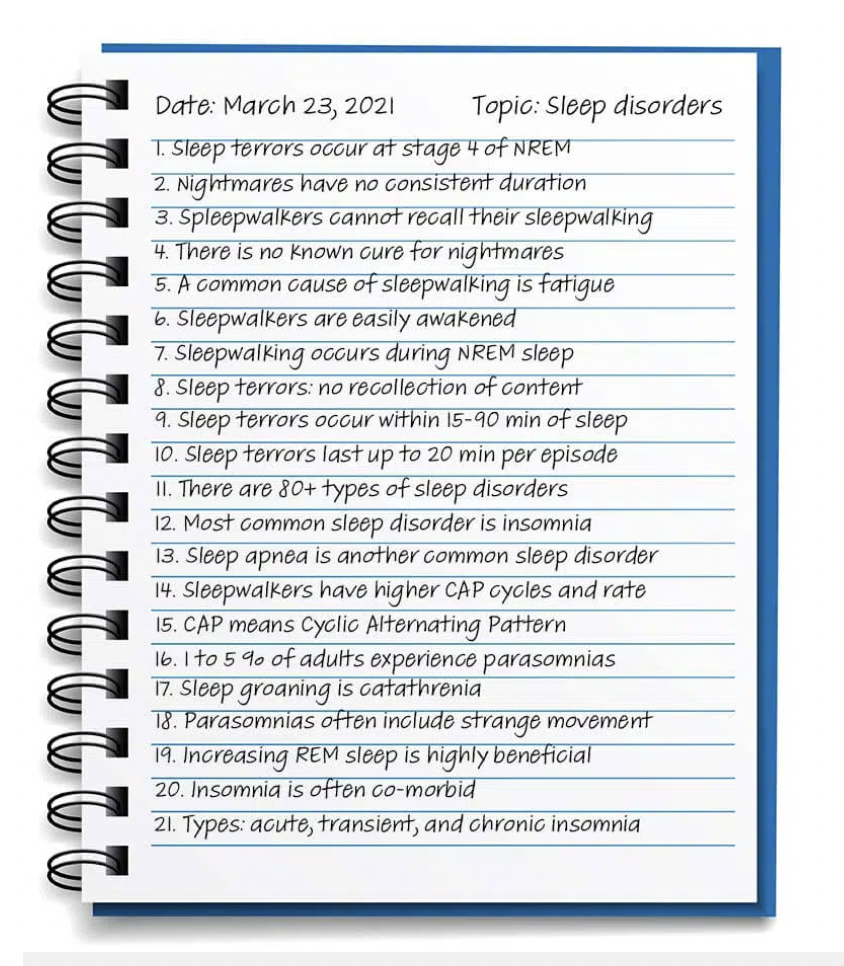
2. The Outline Method: simple note writing system for storing information in a clear hierarchy
The Outline method is a simple and effective note-taking system for storing information in a clear hierarchy. This method is designed to help you write well-organized and better notes by breaking down information into a clear and logical structure.
With the Outline method, you start by writing down the main topic or idea at the top of the page. Then, you list subtopics or supporting ideas in a hierarchical format underneath the main topic. You can continue to break down the information into smaller and smaller subtopics, creating a clear hierarchy of information.
You can use this approach by hand or by using note taking apps like Evernote or Google Keep. Evernote is a powerful app that offers a range of features that help you create and manage your notes.
With the app, you’ll be able to take notes by using the Outline method and then separate them into categories by subject, field, and professor and add to them easily. You can also bring your digital notes with you everywhere. Read more in this Evernote review.
This Outline notes method is particularly useful for storing and organizing information in a logical and structured way. It allows you to see the relationships between different pieces of information easily and makes it easier to review and study the material at a later time.
The Outline method note taking example
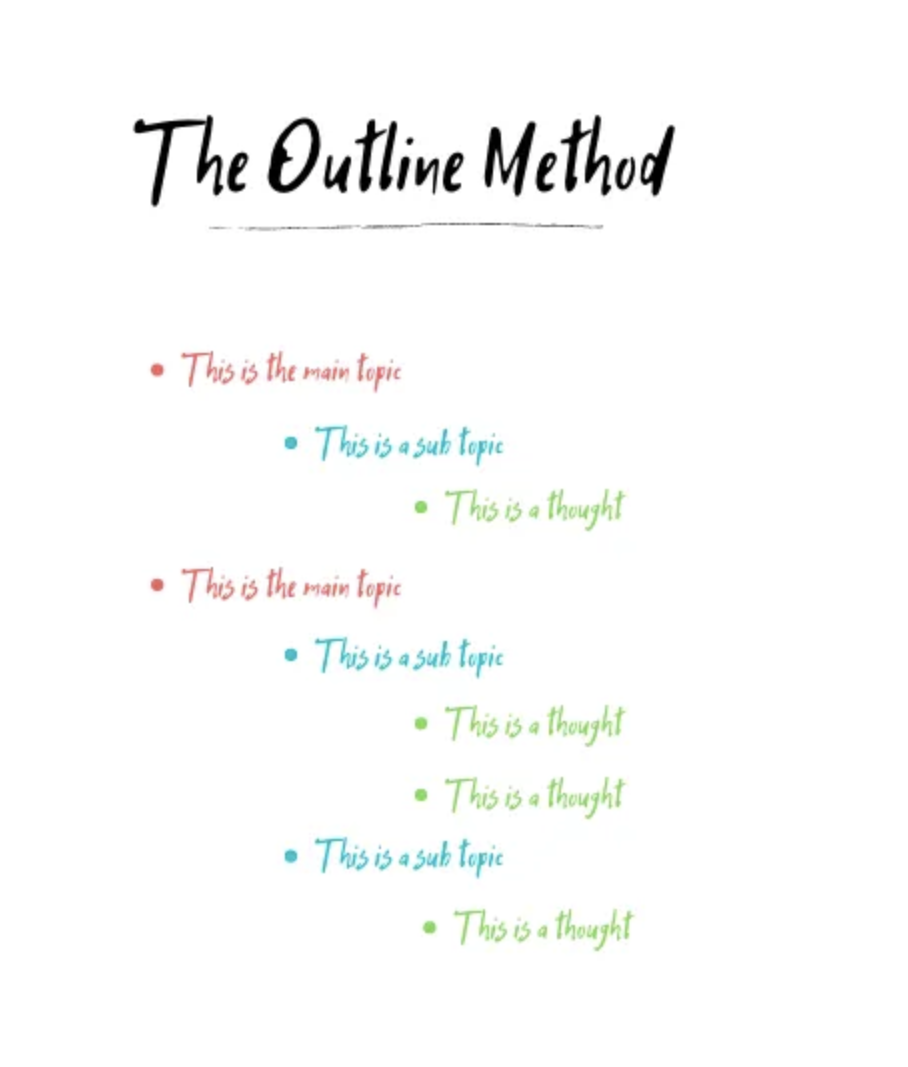
3. The Flow-Based Notes Method: best note taking format for faster learning
Although linear note-taking methods like the Sentence and Outline methods are useful in some cases, consider complementing them with non-linear methods that engage you with the subject matter as a whole. One of the most effective non-linear methods is the Flow method, which concentrates on higher-level concepts and their interrelationships.
The Flow method uses arrows and lines to connect related ideas and show how they fit together, helping you visualize the connections between different concepts.
The Flow method is perfect for subjects that require a lot of synthesis as it lets you see how different ideas fit together to understand the topic fully. This method is also great for visual learners who prefer to see their lecture content or other information organized spatially rather than in a linear fashion.
The Flow-Based method note taking example
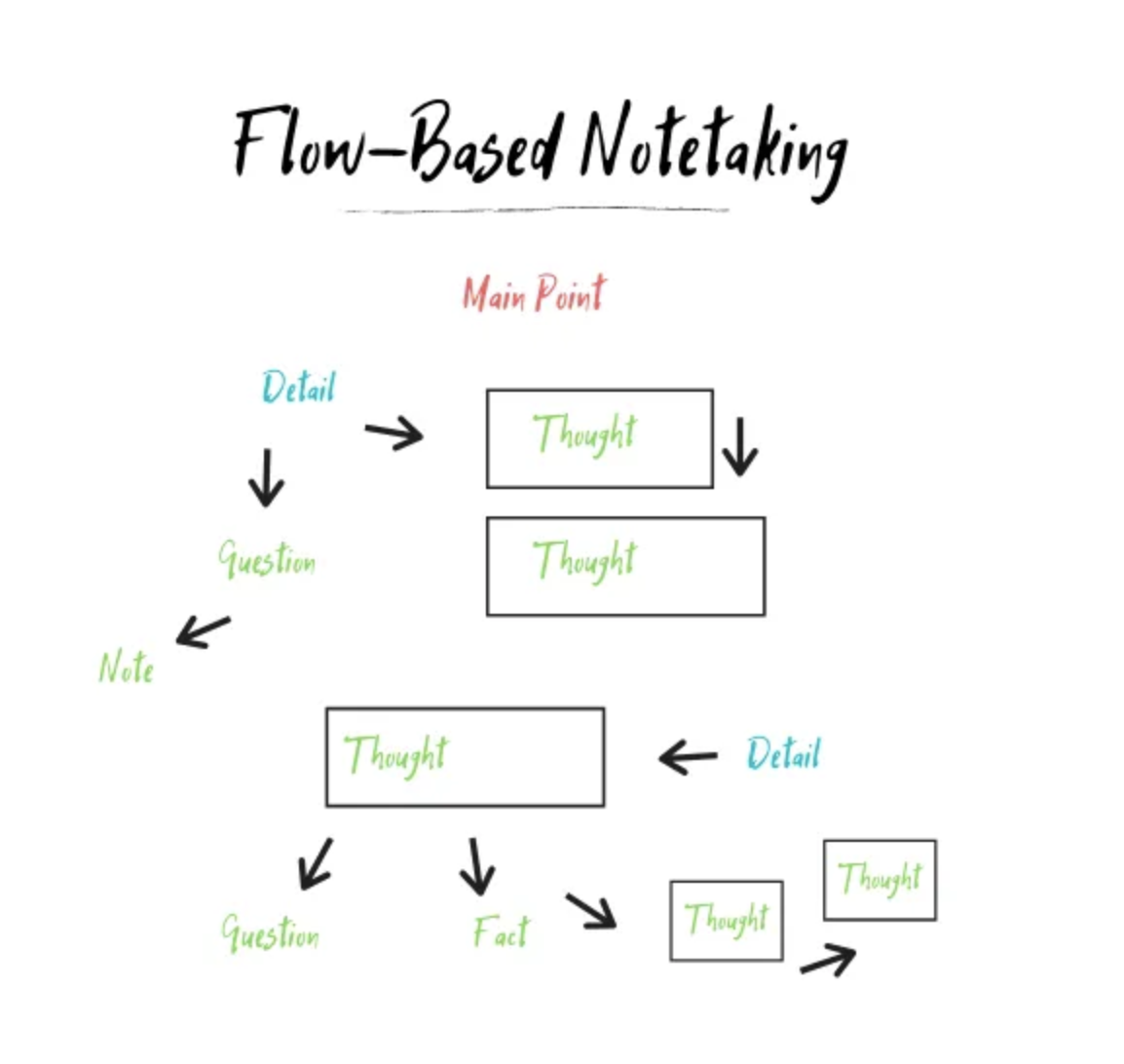
4. The Cornell Note Taking Method: best note taking strategy for easier organization and review of notes
The next system for taking organized notes is the Cornell method that was developed by a professor at Cornell University called Walter Pauk. In short, the Cornell note-taking method is a popular and effective note-taking strategy that can help you better organize and review your notes. With the Cornell method, you divide your note-taking page into three sections: a narrow column on the left, a wider column on the right, and a space at the bottom.
The narrow column on the left is used for writing down key points, questions, or cues to help you with the memorization and review of information. The wider column on the right is used for taking more detailed notes and elaborating on the key points. Finally, the space at the bottom is the summary section that’s used for summarizing and reviewing notes.
The Cornell method requires little effort and is suitable for all subjects, from science and math to history and literature. It's also very easy to learn, making it a great option for note-takers of all levels.
The Cornell method note taking example
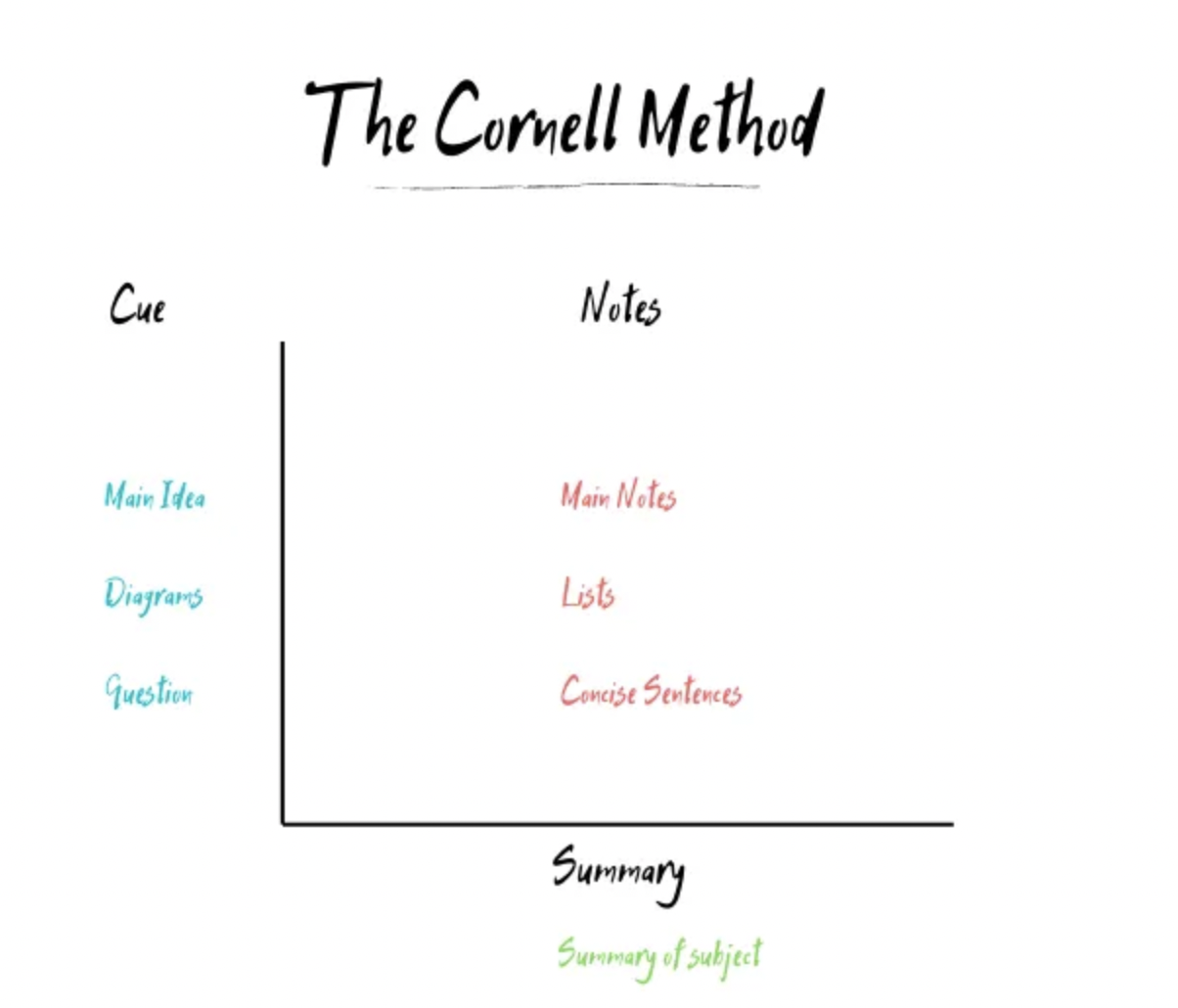
5. The Boxing Method of Note Taking: one of the best note taking systems for writing notes on tablets and laptops
The Boxing method of note taking is a system that involves dividing your notes into boxes or frames. This method is ideally suited for sessions that are divided into different sections. By using boxing method notes, you’ll group all related notes into one box.
It’s one of the most commonly used techniques for taking notes on a tablet or laptop, as it makes it easy to organize your notes in a digital format. However, it can also be used for handwritten notes if you prefer writing by hand. It’s especially great for learners with a visual learning style and those who want to create aesthetically pleasing notes.
The Boxing method note taking example
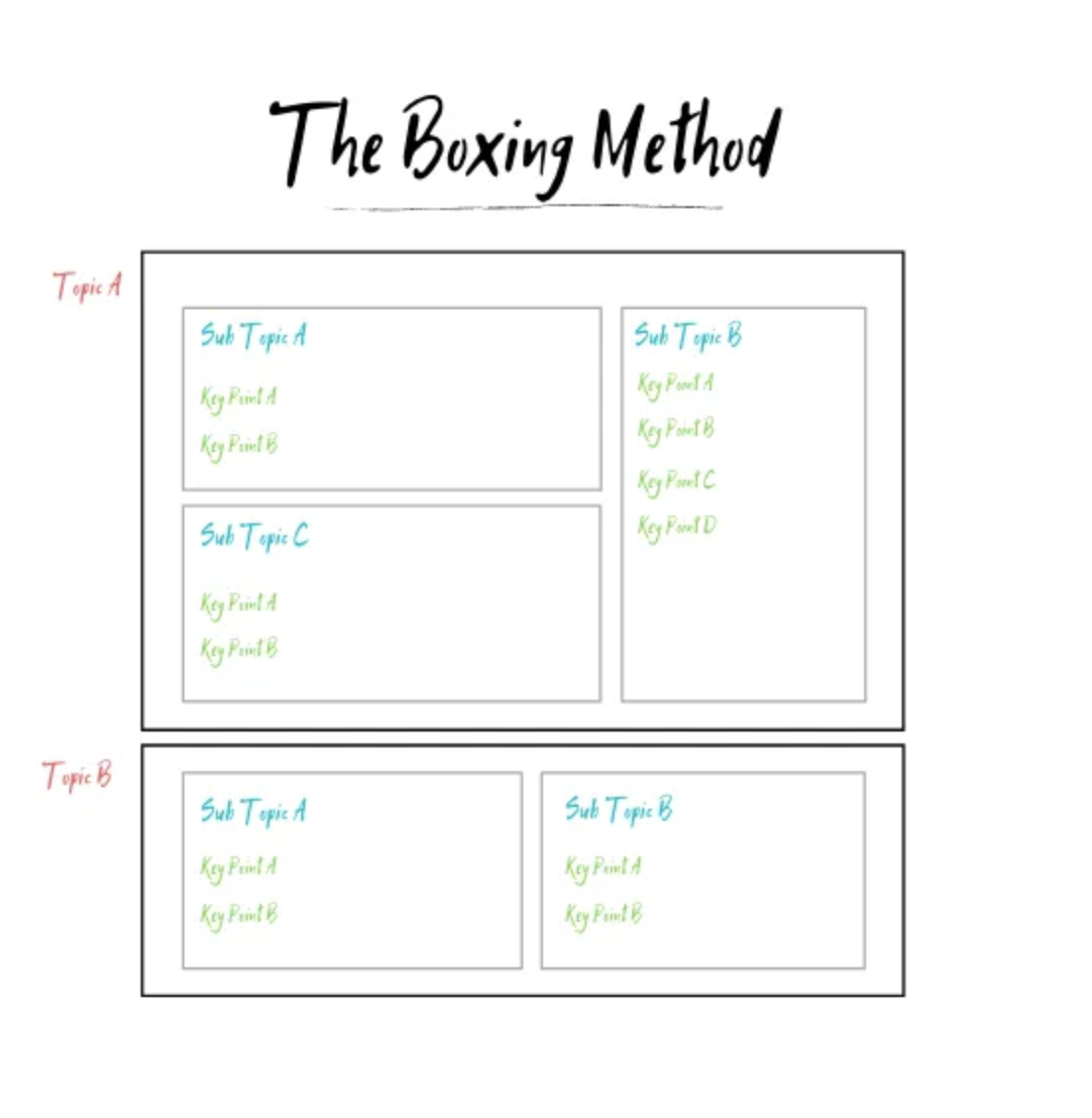
6. The Mapping Method of Note Taking: among the most effective note taking methods for a graphical representation of information
The Mapping method of note-taking is an effective way to visually represent information, ideas, facts, and concepts in a hierarchical manner. With the Mapping method, you start with a central topic in the middle of the page and then branch out into smaller subtopics, supporting topics, and minor details. This method, which is similar to the Webbing technique, is best used in content-rich classes or other educational events where the information is structured and can be grouped into different categories.
The Mapping method is a great way to organize your notes and help you better understand the relationships between different ideas and concepts. By using visual cues like arrows, colors, and shapes, you can create concept maps of the information that's easy to follow and review.
The Mapping method note taking example
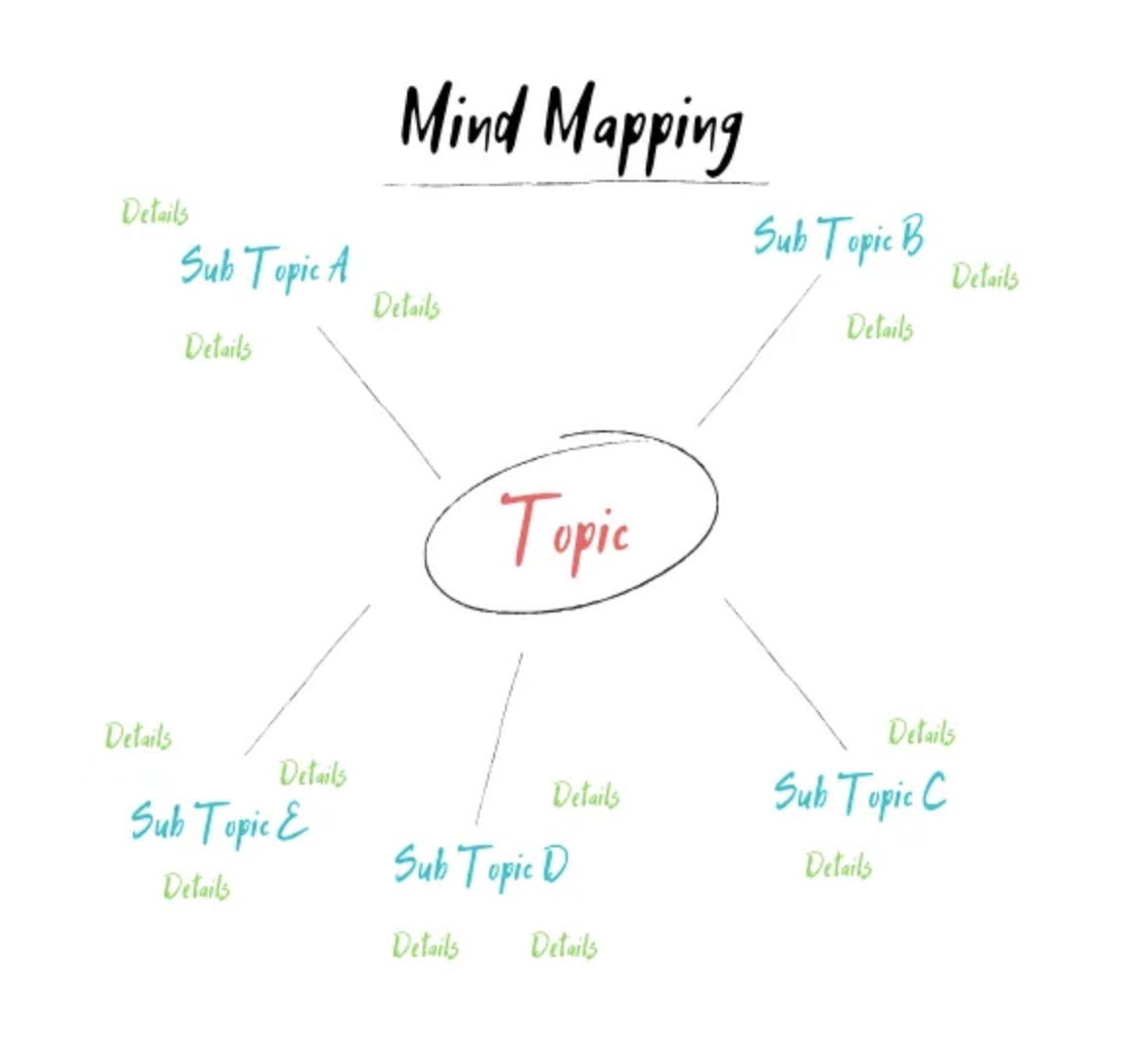
7. The T Notes Note Taking Method: one of the best note taking techniques for mathematics, physics, and engineering
The T method note taking is similar to the Cornell method; the only difference is that the former is mainly used for numerical disciplines like mathematics, physics, and engineering. This method is known for its use of the T method note-taking format, which involves drawing a vertical line down the middle of the page to create a T shape.
In short, on the left side of the “T,” you write your equations, formulas, and problems. On the right side of the “T,” you write personal notes and questions for which you need answers.
The T Notes method is particularly effective for math and science classes, where formulas and equations play a crucial role. By organizing the information in this way, you can quickly reference the formula or concept you need and find relevant examples and explanations to go with it.
The T Notes method note taking example
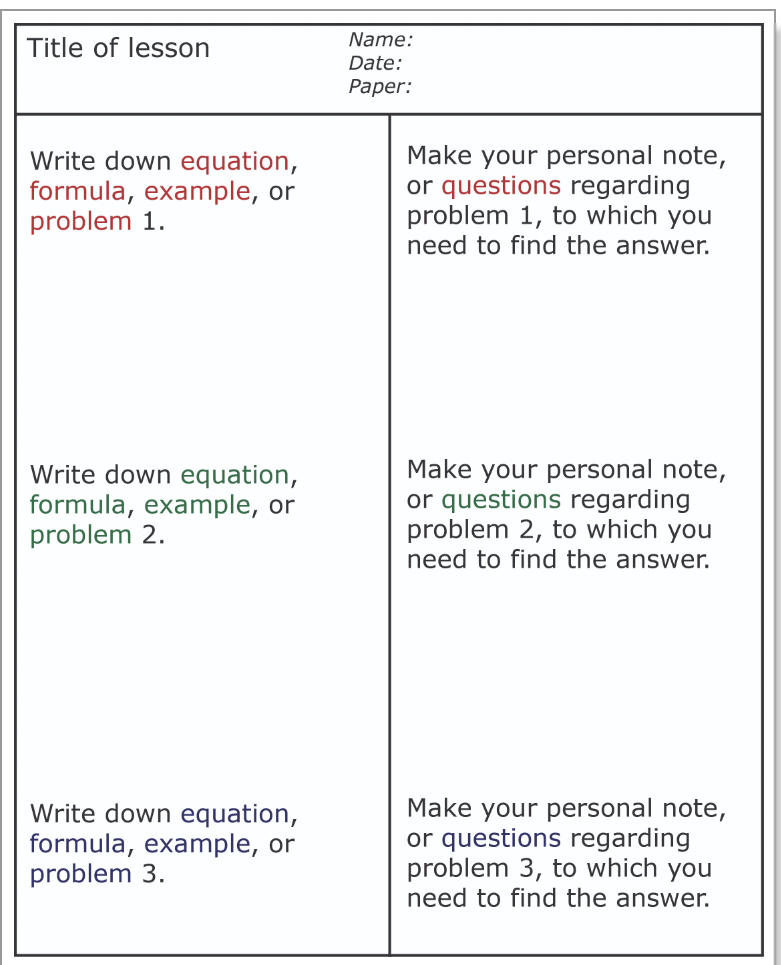
8. The Charting Note Taking Method: great system for recording facts and statistics
The Charting note taking method is a great way to record and organize facts and statistics. This method involves creating a table or chart to represent the information you're trying to record visually.
With the Charting method, you'll use columns and rows to organize the information, making it easy to see the relationships between different facts and statistics. This system is particularly useful for subjects that require a lot of data, such as science, math, and social studies.
You can use it to take notes by hand or get a note taking app like Notion, for example. In Notion, you’ll be able to create a page and add a chart block to it for your notes. Read our Notion review for more details.
The Charting method note taking example
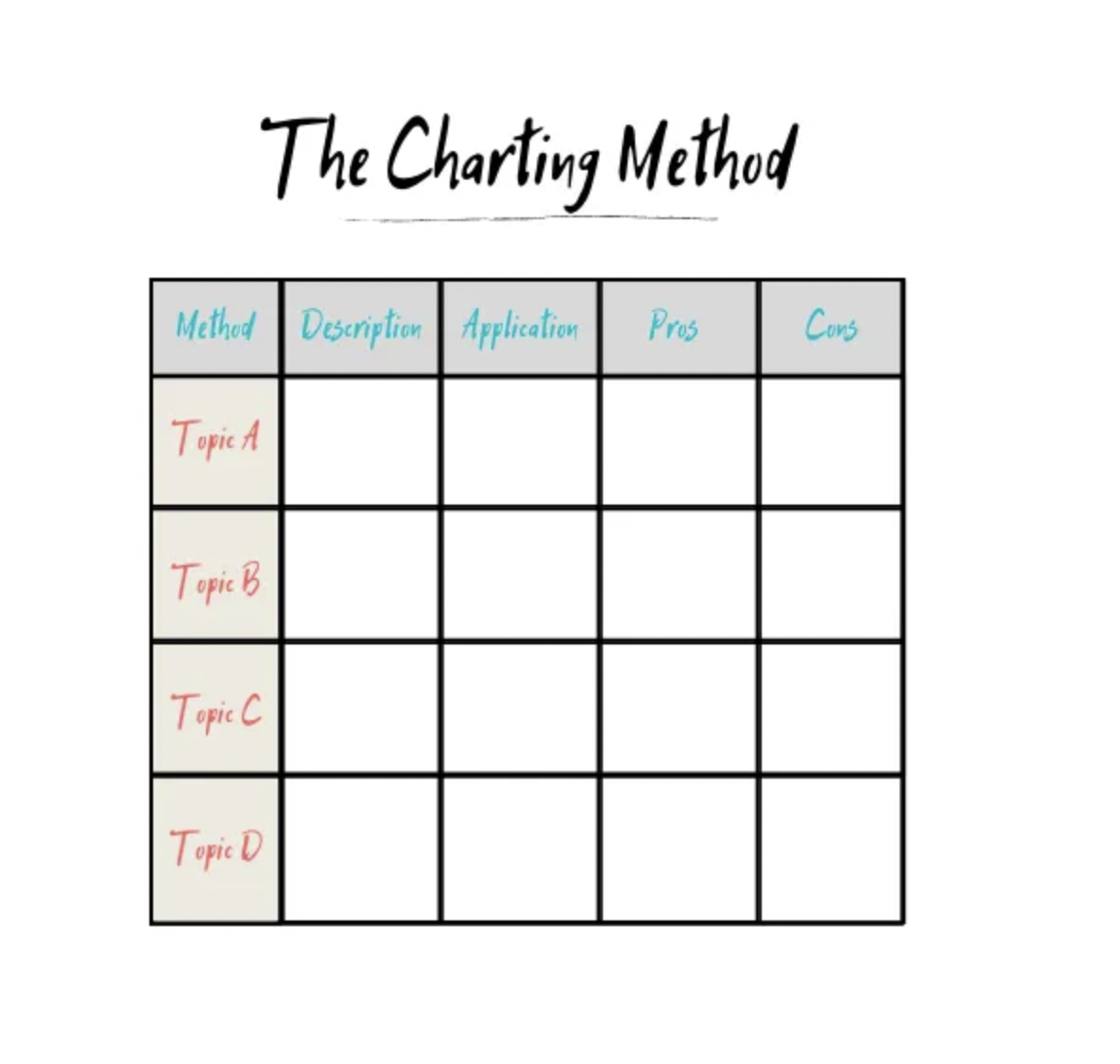
9. The QEC Note-Taking Method: one of the best note taking styles for history, philosophy, and literature
The QEC (Question, Evidence, Conclusion) note-taking method is a great way to record and analyze information. With the QEC method, you start by writing down a question or prompt that summarizes the information you're trying to understand. Then, you record evidence that supports or refutes the question, such as quotes from a text or historical facts. Finally, you draw a conclusion based on the evidence you've gathered.
This system is particularly useful for subjects that require critical thinking and analysis, especially subjects like history, philosophy, and literature.
The QEC method note taking example

10. The QA Split-Page Method: good note taking style for subjects that are broad
The QA Split-Page method is a note-taking system that involves dividing your page into two columns: one for questions and one for answers. This method is particularly effective for broad subjects where there is a lot of information to cover.
It can help you better understand and retain the material by encouraging active engagement with the material. It also provides a clear structure for your notes, making it easier to review and study the information at a later time.
The QA Split-Page method note taking example
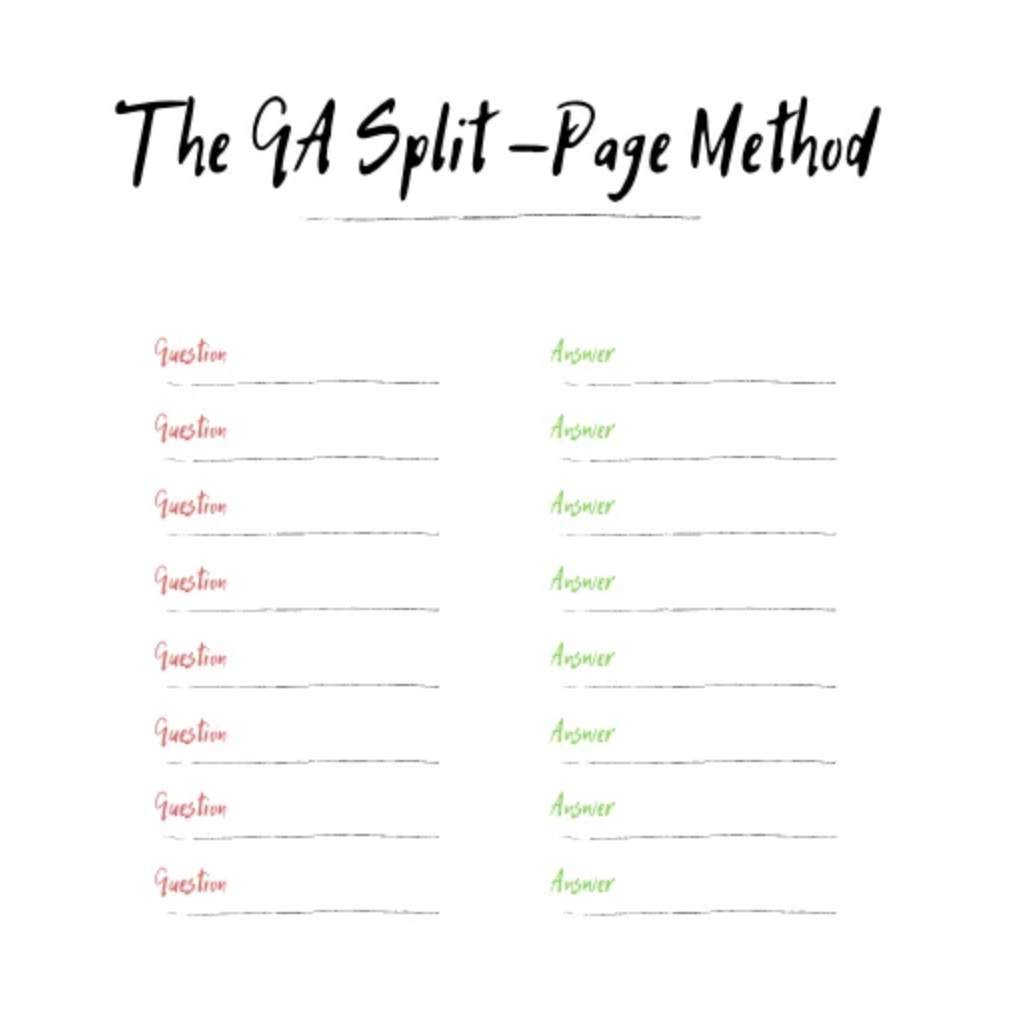
11. The Rapid Logging Method: effective note taking technique for bullet journal enthusiasts
The Rapid Logging method is a popular note-taking technique that was first introduced as part of the Bullet Journal system. It's a highly efficient and flexible method that can be used for a wide variety of note-taking purposes, from journaling to meeting notes.
The Rapid Logging method involves using bullets and symbols to quickly and efficiently record information. Each bullet or symbol represents a different type of information, such as tasks, events, or notes. It’s designed to be fast and efficient, allowing you to record a lot of information in a short amount of time.
The Rapid Logging note taking example
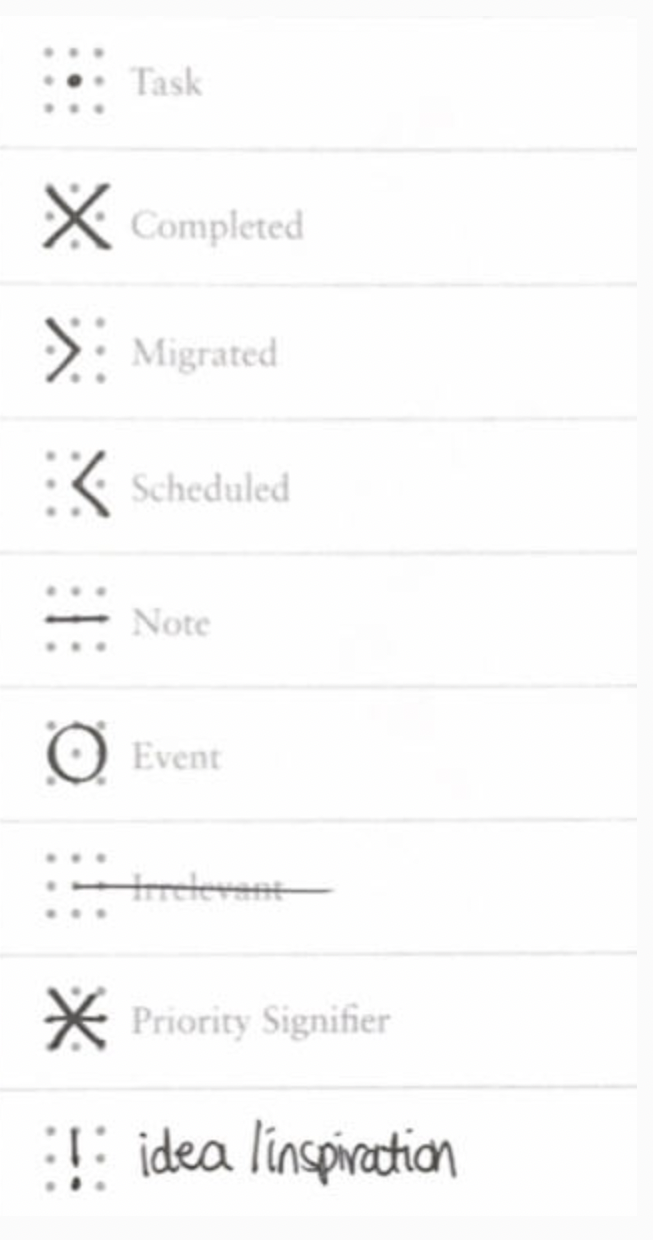
12. The Box And Bullet Method: good note taking system for extracting main ideas
The Box and Bullet method is a note-taking system that involves dividing your page into two sections: one for main ideas (in boxes) and one for supporting details (in bullets). This method is a great way to visually organize information and helps you see the relationships between different ideas.
One of the great benefits of the Box and Bullet method is that it allows you to transform complex ideas into your own words. By breaking down the information into smaller pieces, you can better understand and interpret the information, and then put it into your own words.
The Box and Bullet method note taking example
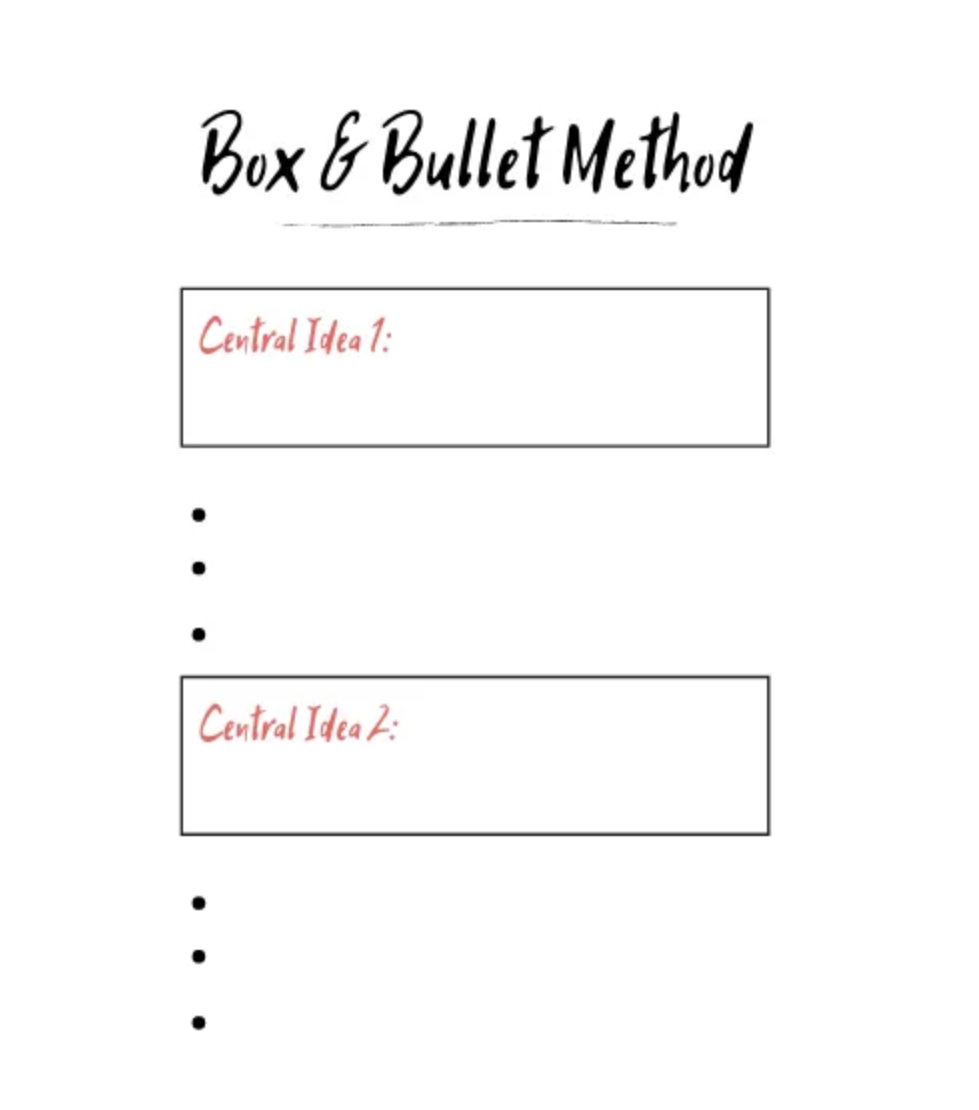
Key takeaways about the different forms of note taking
In this blog post, we've explored 12 different kinds of note taking, from the traditional Sentence and Outline Methods to more modern methods like Rapid Logging and Box and Bullet. Each method has its own unique advantages and can be effective in different situations.
For example, the Mapping Method is great for organizing complex information, while the Cornell Method is a good choice for structured lectures or studying for exams. The Box and Bullet Method can help you transform complex ideas into your own words, and the Rapid Logging Method is great for bullet journal enthusiasts.
Ultimately, the best note-taking method for you will depend on your personal preferences, the type of information you're trying to record, and the context in which you're taking the notes. If you're a student, a manager, a writer, or something else entirely, you may find that different methods work better for you in different situations.
The key to effective note-taking is to find a method that works for you and to use it consistently. By taking the time to experiment with different methods and find the one that suits your needs and learning style, you can improve your ability to organize, retain, and apply the information you're learning. So give some of these note-taking methods a try and find the one that works best for you!
FAQs
Which is the best note taking method?
There is no one "best" note-taking method that works for everyone. The most effective note-taking method depends on your personal preferences, the type of information you're trying to record, and the context in which you're taking the notes. The best approach is to experiment what works best for you.
Which note taking method is not recommended for taking notes during a lecture?
Some people may find that methods like the Boxing, Mapping, and Charting are more time-consuming and complex for fast-paced lectures or for quickly recording a lot of information. In these cases, you may go with a more streamlined note-taking method, such as the Sentence Method or the Outline Method.
The charting method for note taking is most effectively used in which type of situation?
The Charting Method for note-taking is most effectively used in situations that involve a lot of data or information that needs to be organized and compared. For example, it might be useful in subjects such as science, math, and social studies, where there may lots of information to organize.
This method can also be effective in situations where you need to record comparisons and contrasts between different ideas or concepts.




